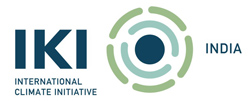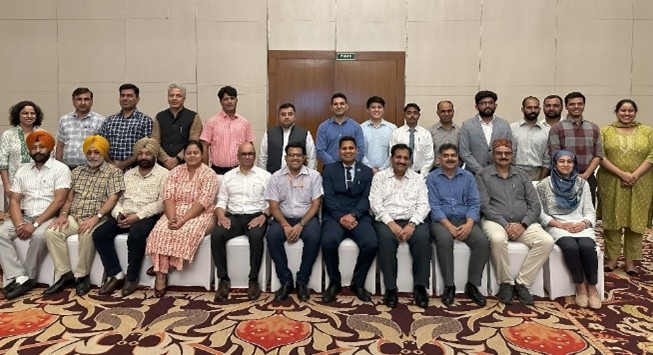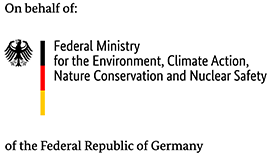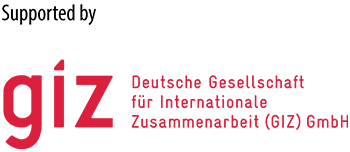Wetlands Management for Biodiversity and Climate Protection
July-September | 2024Bilateral
Protection of Biodiversity
Link To Project: Click Here
Project Updates
1. Workshop on past measures and future priorities for integrated management of India’s largest freshwater lake - Wular lake
Wular Lake, India’s largest freshwater lake and a Ramsar Site, plays a crucial role in the Kashmir Valley as a flood buffer, key biodiversity habitat, and a source of food, water and diverse livelihoods. However, these wetland values are strained due to challenges associated with siltation, invasive species, and waste discharge.
On 8 August, the Wular Conservation and Management Authority (WUCMA) jointly with the Ministry of Environment, Forest and Climate Change (MoEF&CC) - GIZ ‘Wetlands Management for Biodiversity and Climate Protection’ project and Wetlands International South Asia (WISA), organised consultation workshop for Wular Lake in Srinagar, with over 70 participants representing the diverse stakeholders. The workshop facilitated discussions on these past management actions implemented at Wular Lake, their effectiveness, and jointly identify future priorities and strategies for a revised integrated management plan.
The workshop was inaugurated by the Financial Commissioner and Additional Chief Secretary Forest, Dheeraj Gupta, who highlighted the government’s focus on restoring and revitalising Wular Lake with special focus on the ecotourism and livelihood of the local communities.
The discussion emphasised the need for strengthening cross-sectoral collaboration and inclusive governance with greater community involvement. Various stakeholder inputs also helped highlight the future research priorities on hydrology and sedimentation, fish and waterbird diversity and movement, and catchment soil erosion vulnerability.
This consultation kicked-off the process of developing a revised integrated management plan for Wular Lake. Further inputs from site level stakeholder meetings and assessment would inform the final plan for the wetland.
Aimed at biodiversity conservation and enhancing climate resilience and community well-being through ecosystem-based approaches, it aligns with India’s commitments towards Sustainable Development Goals (SDGs).
Group photo of the participants | © WUCMA
Inaugural session chaired by ACS Forests | © GIZ
Group exercise on wetland livelihoods | © WUCMA
2. Stakeholder Workshop on Evaluating Climate Adaptation and Disaster Resilience Co-Benefits of Wetland Management
Project: Indo-German Support Project for Climate Action in India
Wetland conservation and restoration measures offer significant climate co-benefits, including contribution to climate change mitigation and adaptation, even when not explicitly aimed at climate action. Assessing these benefits is crucial to strengthening India's Nationally Determined Contributions (NDCs) and supporting national initiatives like the National Plan for Conservation of Aquatic Ecosystems (NPCA), Green Credit Programme, and Mangrove Initiative for Shoreline Habitats & Tangible Incomes (MISHTI). However, the positive impacts of these measures are inadequately understood.
To address this, a methodology for evaluating the climate adaptation and disaster risk reduction (DRR) co-benefits of wetland management is being developed under the ‘Indo-German Support Project for Climate Action in India,’ implemented by GIZ in partnership with MoEF&CC under IKI. This approach, developed in collaboration with Wetlands International South Asia (WISA), Perspectives Climate Group, and the Institute of Economic Growth, is being piloted across various wetland types including high-altitude, coastal, floodplain, and urban wetlands.
On 6 August, a stakeholder workshop chaired by Dr. Sujit Kumar Bajpayee, Joint Secretary, MoEF&CC, presented and discussed this methodology. Representatives from key organisations, including the Chilika Development Authority, National Centre for Sustainable Coastal Management, WWF, Centre for Water Resources Development and Management, Kerala State Wetland Authority, International Water Management Institute, International Council for Local Environmental Initiatives, CEEW, Anna University, National Disaster Management Authority and Niti Aayog attended the workshop. The workshop highlighted the methodology's comprehensiveness but noted that quantifying adaptation benefits would depend on data availability. Additionally, the need for capacity development at local levels to effectively apply the tool was discussed alongside its potential to leverage national and international climate finance.
Following the workshop, a field visit to Pallikaranai Marsh, a key flood buffer in Chennai and a pilot site, allowed discussions with the Tamil Nadu State Wetland Authority on preliminary assessment results.
This innovative methodology has the potential to play a vital role in aligning sustainable wetland management with climate adaptation and disaster resilience planning, supporting India’s ongoing NDC implementation.
Group discussion on Tier 1 tool for assessment of adaptation co-benefits of wetland management | © Wetlands International South Asia
Stakeholder workshop on assessment of climate adaptation and disaster resilience co-benefits of wetland management| © GIZ
Field visit to Pallikaranai Marsh, one of the proposed sites for piloting the assessment methodology | ©Wetlands International South Asia
3. Empowering Community Stewardship: CEPA Program for Bhitarkanika Mangrove Conservation
Bhitarkanika Mangroves, a Ramsar site on eastern Indian coast, supports over 400 villages through agriculture, fishing, and aquaculture. It also protects the region from cyclones and tidal surges. The IKI-BMUV and MoEF&CC Wetlands Management for Biodiversity and Climate Protection project, implemented by GIZ, focuses on green recovery measures, nature tourism training, and participatory management planning. As co-inhabitants and dependents of the wetlands, the local communities often face human-wildlife conflicts, particularly with saltwater crocodiles. Vulnerable groups, particularly women and children, are at the forefront of these conflicts, making their engagement critical.
In the Kendrapara district, 15 schools held teacher orientation programs and awareness campaigns aimed at reducing human-crocodile interactions from October to December 2023. To scale these efforts further, a Communication, Education, Participation, and Awareness (CEPA) program was organised from 3-5 August 2024, with support from APOWA and the Mangrove Forest Division. Teachers and students from 10 schools participated in developing strategies for mangrove conservation, pollution reduction, and human-wildlife conflict mitigation. They brought their perspective on various issues through impactful plays. The forest officials educated students on the Bhitarkanika Protected Areas through interactive sessions.
The program also featured children’s author Katie Bagli. She engaged students in creative storytelling sessions to amplify their voices. Her book Mysterious Mangroves of Bhitarkanika supported by the project was launched during the event.
Additionally, local Self-Help Groups (SHGs) joined discussions about their role in the region’s tourism and the impacts of climate change. Many SHG members, who had never visited the protected area, expressed interest in nature tourism, homestay operations, and handicrafts to contribute to the region's tourism growth.
These efforts highlight the importance of inclusive community stewardship, ensuring that voices across ages and genders contribute to conservation efforts in line with the Save Wetlands Campaign and Ramsar Convention’s CEPA Resolution.
Some of the participants from Mahila Self Help Groups embark on the field visit (c) GIZ/APOWA
Range Officer Shri Manas Kumar engages with Mahila Self Help Group members ©GIZ/APOWA
DFO Shri Sudarshan Kumar Jadhav in discussion with the students ©GIZ/APOWA
Snippet from some of the nukkad naataks presented by a participating school © GIZ/APOWA
Session on significance of mangroves conducted by forest staff Mr Niraakar in the mangrove nursery which is maintaining a sapling bank of the various species found in Bhitarkanika ©GIZ/APOWA
Author Ms Katie Bagli shares tips with students on telling compelling stories on nature and wildlife © GIZ/APOWA
4. Wetlands for LiFE Film Festival and Forum: Harnessing the Power of Film for Wetland Conservation
Films possess a unique power to inspire change by evoking emotions and challenging perspectives. The Wetlands for LiFE Film Festival and Forum taps into this potential, raising awareness about India's wetlands—crucial ecosystems for biodiversity, water security, and livelihoods. This initiative emphasises participatory storytelling and filmmaking to engage citizens in wetland conservation, blending media, art, and environmental education.
Launched in February with the Indore Chapter, the festival has since expanded to other cities. Its second edition, held in Lucknow from 1-3 July, featured workshops, film screenings, and discussions to mobilise local action. Seventy Wetland Mitras (Friends of Wetlands) were registered to support wetlands in the region, and participants received training in Mobile Journalism (MoJo), learning to produce impactful films. Ten of these films were showcased at the event, inaugurated by Shri Arun Kumar Saxena, Uttar Pradesh's Minister of Environment, Forest & Climate Change.
Most recently, the festival reached Shimla on 30-31 August, where award-winning filmmakers engaged with local participants, government leaders, and civil society. Inaugurated by Himachal Pradesh's Chief Minister Shri Sukhvinder Singh Sukhu, the event highlighted the state’s wetlands and included self-produced films by Wetland Mitras and a painting competition. These efforts have deepened the participatory spirit of the festival, reinforcing the role of citizens in wetland conservation.
As the festival concluding chapter planned for New Delhi in September, the Wetlands for LiFE project continues to champion the protection of wetlands as vital ecosystems for biodiversity, water security, and community livelihoods, engaging citizens, media, and policymakers in a collective effort for conservation.
Shimla: Dignitaries watching Wetland-based films in presence of the Hon’ble Chief Minister of Himachal Pradesh, Shri Sukhvinder Sukhu © GIZ
Lucknow: Participation from the Hon’ble Environment Minister of Uttar Pradesh, Shri Arun Kumar Saxen, and Chief Representatives from the UP Forest Department © GIZ
Mobile Journalism Filmmaking Workshop at Ambedkar University, Lucknow© GIZ
Film screening at the Lucknow festival © GIZ
Art corner at the Film Festival for visiting students © GIZ
5. Government of India launches Management Effectiveness Tracking Tool (METT) for Indian Wetlands
India is home to 85 Ramsar Sites covering an incredible 1.36 million hectares. These wetlands of international significance are crucial for biodiversity, water regulation, and climate resilience. Designated within the framework of the Ramsar Convention, the 85 sites reflect the commitment to preserve and wisely manage these unique ecosystems.
To monitor and enhance the impact of wetland management interventions, the Government of India introduced the ‘Management Effectiveness Tracking Tool (METT) for Indian Wetlands’. Developed under the Wetlands Management for Biodiversity & Climate Protection project, the tool tailored the Ramsar Site Management Effectiveness Tracking Tool (R-METT) to India’s unique socio-environmental landscape. The METT for Indian Wetlands was piloted at project sites and a result of collaborative efforts between experts and practitioners.
The main purpose of METT:
- Assess the effectiveness of management action and their outcomes over time.
- Informed decision-making on resource allocation
- Valuable insights structured across management cycle to support adaptive management
As part of ongoing national initiatives, METT is being rolled out across all Ramsar Sites in India, supported by regional capacity building workshops for site managers. The first such regional METT Workshop was held in Chandigarh in July 2024 for wetland managers from 17 Ramsar Sites across five states in the Northwest of India.
During the workshop, management plans and actions were assessed for 10 Ramsar Sites. These would be finalised as METT reports by site managers following consultation with key stakeholders. More such regional METT workshops are planned in the coming weeks.
Access the METT Guidebook: https://bit.ly/WetMETT
Group photo of the participants | © GIZ India
A glimpse of METT workshop for Ramsar Site Managers and Representatives of Wetland Authorities | © GIZ India
A poster on Management Effectiveness Tracking Tool (METT) Indian Wetlands | © GIZ India
NEW PUBLICATIONS:
Celebrating Wetland Diversity: Introducing the Wetland Word Map
The Wetland Word Map is developed under under the Wetlands Management for Biodiversity & Climate Protection project implemented by GIZ in partnership with MoEF&CC under IKI. It showcases the rich linguistic diversity of wetlands across different regions, reflecting the deep connection between local communities and their environments. Launched at the ‘Regional Workshop on Conservation and Wise Use of Wetlands for Southern States and Union Territories’ in Hyderabad, this initiative also supports the International Decade of Indigenous Languages (2022–2032).
The Word Map is an evolving resource, and we encourage you to add to its richness. Share the names used for wetlands in your area and contribute to this growing database! Write to Contact Shambhavi Krishna to add your local terms. shambhavi.krishna@giz.de
Link to the Map: https://indo-germanbiodiversity.com/pdf/publication/publication20-08-2024-1724150334.pdf
© GIZ India
A film on Biodiversity and Beyond: The Story of Point Calimere
Tamil Nadu’s first Ramsar Site, Point Calimere Wildlife and Bird Sanctuary! Spanning 38,500 hectares, this vibrant sanctuary is a haven for over 0.1 million migratory birds, including the rare Spoon-billed Sandpiper. It’s a crucial nesting ground for Olive Ridley Turtles and home to one of South India’s largest populations of blackbucks. Beyond its breathtaking wildlife, Point Calimere plays a key role in protecting coastal communities and supporting local livelihoods through fishing, salt production, and eco-tourism.
This film is a production of GIZ on behalf of the German Federal Ministry for the Environment, Nature Conservation, Nuclear Safety and Consumer Protection (BMUV), in cooperation with the Ministry of Environment, Forest and Climate Change (MoEFCC), Government of India. It is part of the Indo-German Technical Cooperation project ‘Wetlands Management for Biodiversity and Climate Protection’ under the International Climate Initiative (IKI).
© GIZ India
A Storybook on the Mysterious Mangroves of Bhitarkanika
This storybook is published by GIZ on behalf of the German Federal Ministry for the Environment, Nature Conservation, Nuclear Safety and Consumer Protection (BMUV) in collaboration with the Ministry of Environment, Forest and Climate Change (MoEFCC), Government of India, is part of the Indo-German Technical Cooperation project ‘Wetlands Management for Biodiversity and Climate Protection’ under the International Climate Initiative (IKI).
Follow young Runu from Bhitarkanika and Jehan, who visits with his father, as they explore the vibrant mangroves. Encounter diverse wildlife, from rare saltwater crocodiles to migratory turtles, and see how these coastal guardians protect communities. Available in English and Odia, the book highlights the importance of preserving these vital ecosystems.
Link to the English version: https://indo-germanbiodiversity.com/pdf/publication/publication20-06-2024-1718889581.pdf
© GIZ India
Copyright © 2025 All rights reserved





